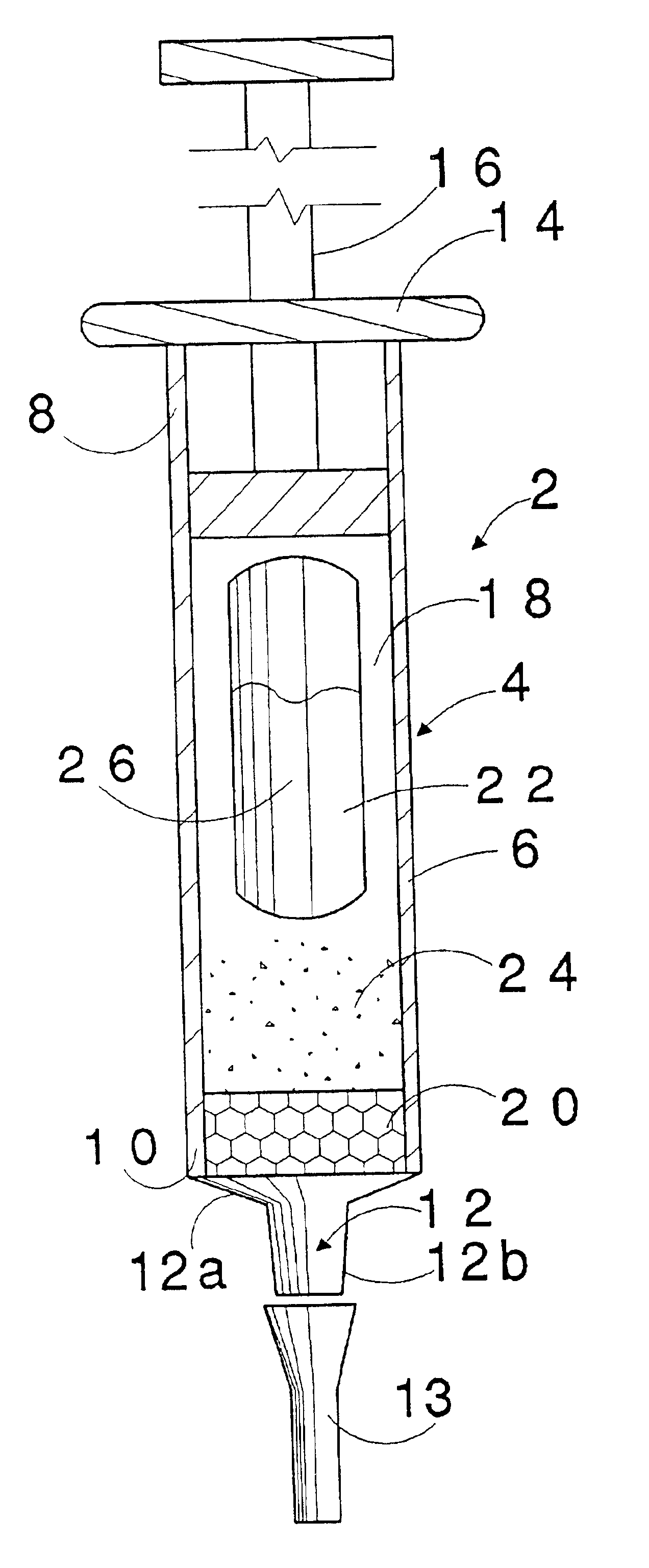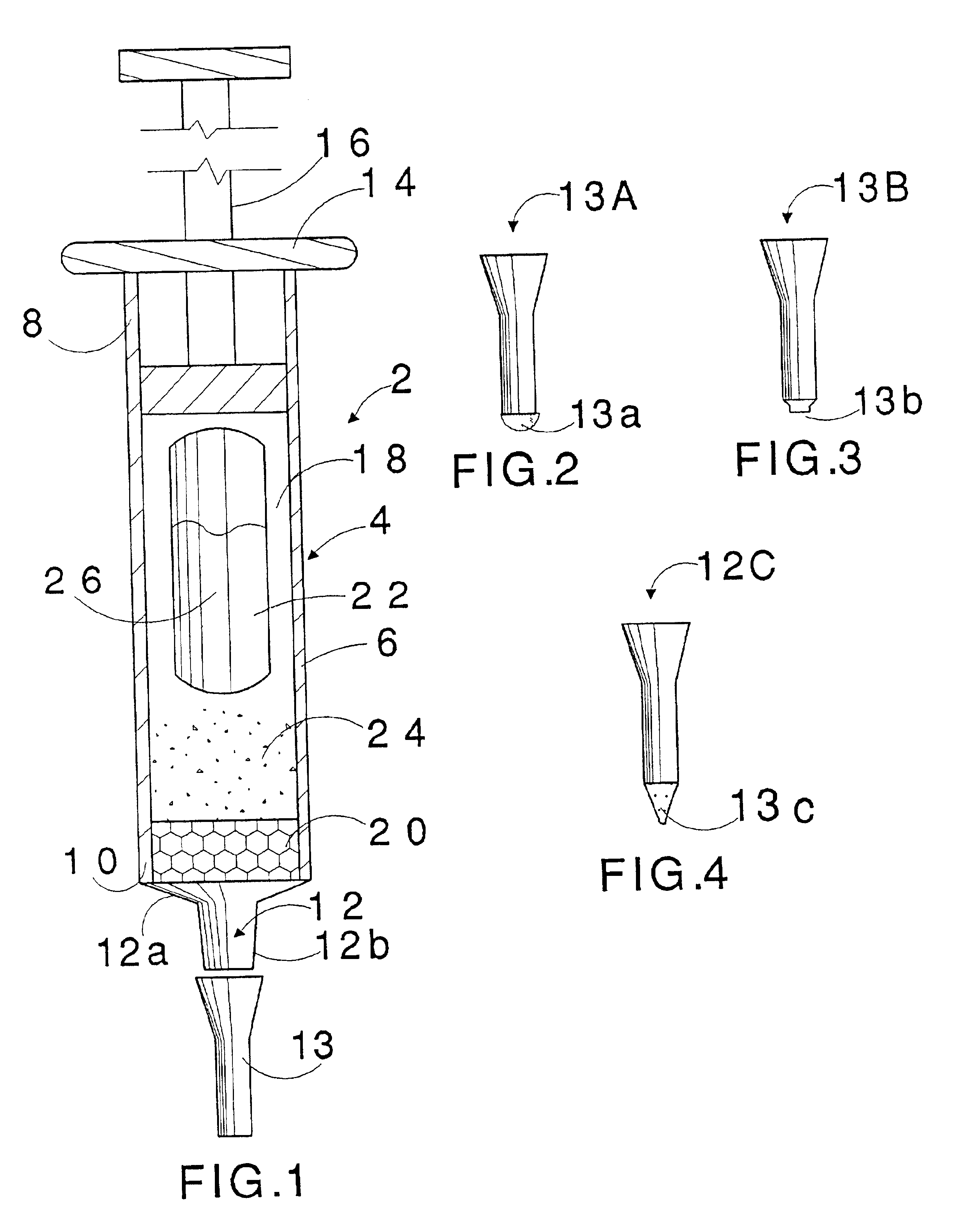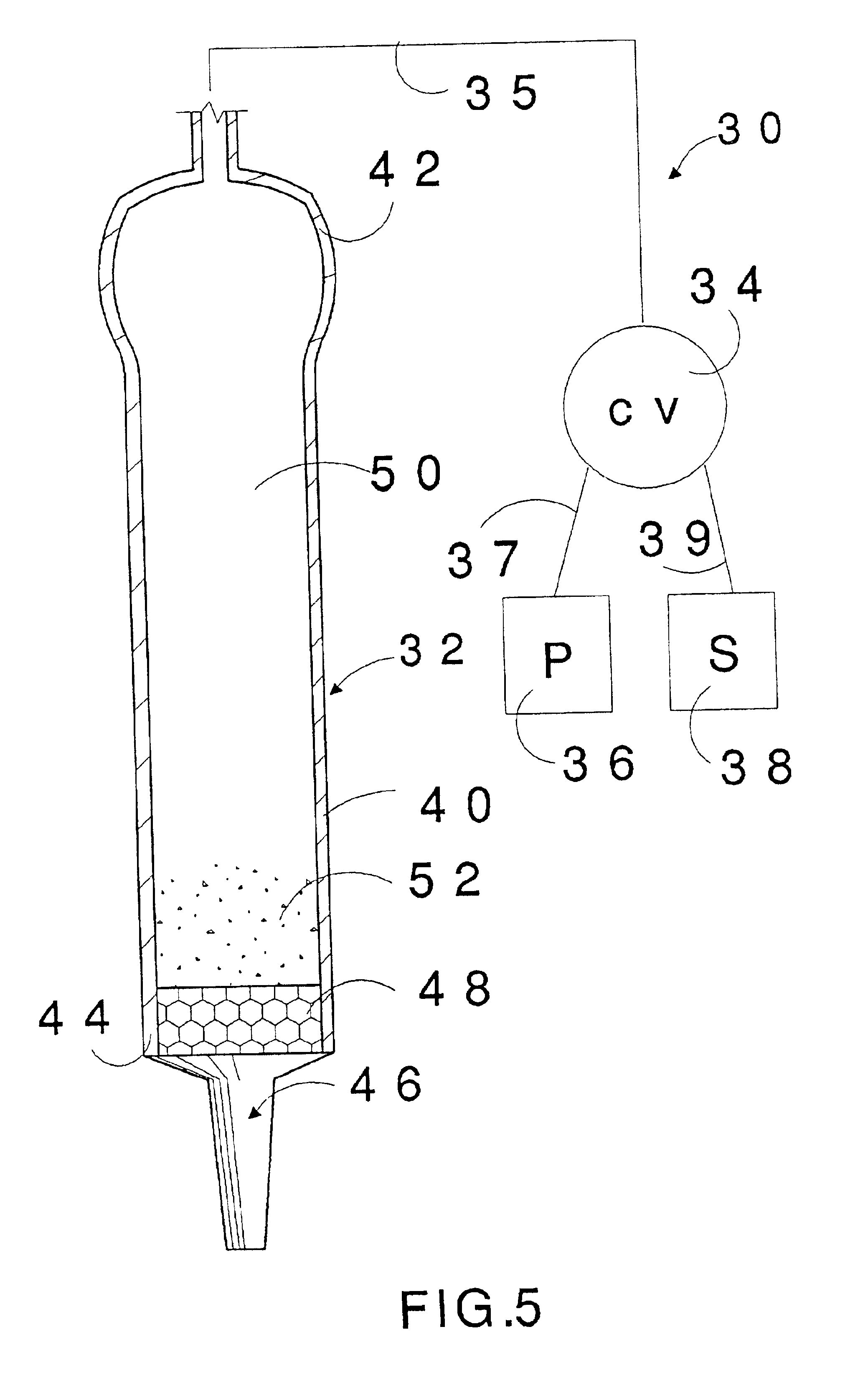Method for curing cyanoacrylate adhesives
a technology of cyanoacrylate and adhesive, which is applied in the field of curing stabilized cyanoacrylate adhesive, can solve the problems of awkward and cumbersome methods, ineffective use of typical polymer solvents in solvating tissue-bound polymers, and insufficient multiaxial strength, so as to prevent adhesive encapsulation, maximize the reconstitution of surrounding tissue, and the effect of sufficient multiaxial strength
- Summary
- Abstract
- Description
- Claims
- Application Information
AI Technical Summary
Benefits of technology
Problems solved by technology
Method used
Image
Examples
example 1
A quantity of particulate destabilizing agent in the form of suspension type, weak base anion exchange resin beads is treated with distilled water followed by vacuuming to 0.20 mm Hg at 35-50 degrees centigrade to remove volatiles and moisture.
Approximately 1.0 gram of iso-octyl cyanoacrylate monomer is sealed in a frangible ampoule. Such cyanoacrylate monomer has been stabilized with hydroquinone at 0.5%. The acid stabilizer, methane sulfonic acid, was introduced previously into the cyanoacrylate monomer during its synthesis at 0.25%. The cyanoacrylate monomer in the ampoule and approximately 1.0 gram of the treated anion exchange resin are individually introduced into a tubular device referred to as a Tandem Dropper supplied by James Alexander Company of Blairstown, N.J., that also provided unsealed ampoules.
In order to filter matter dispensed from the dispenser tip of the Tandem Dropper, it is plugged internally with a small wad of polyester fiber also supplied by James Alexander...
example 2
A two milliliter plastic dispensing pipette is cut at the bulb end to permit charging of destabilizing agent. The pipette is a Number 3 obtained from Poly-Pipets, Incorporated of Englewood Cliffs, N.J. A ¼ inch polyester fibrous plug as described in Example 1, is inserted down into the narrow tip portion and then 0.5 grams of anhydrous granular potassium carbonate are charged into the pipette. The plug acts as a filtration barrier to contain the granular potassium carbonate.
The bulb end of the pipette is heat sealed and the resultant device is used to suction about 1 milliliter of iso-octyl cyanoacrylate monomer for mingling with the enclosed particulate. The device is positioned with the tip vertically upward and the components are intermingled by successive squeeze and release actions for a short period of time. Upon satisfactory mixing, the unit is used to apply the resulting destabilized adhesive onto to skin as thin film portions on the back of a hand. It is determined they und...
example 3
A test was conducted on a wound accidentally caused by a hot surface to the inside of the left forearm. The wound, approximate dimensions of ¼ inch by 1.5 inches, had begun to slough off the burned skin exposing the underlying tissue. To evaluate the protective effect of the destabilized liquid adhesive, the device of Example 2 was used to apply destabilized iso-octyl cyanoacrylate adhesive. The wound was overlayed with a thin film and cure took place in the 15-30 second range. The applied and cured cyanoacrylate adhesive remained well attached for a period of days to the injured skin while it served to protect the covered wound area from irritation and infection by clothing or other contact as well as promote the healing process. This contrasted with prior experiences of similar wounds where the damaged tissue did not heal well due to physical contact with surrounding irritants such as clothing or other contact surfaces.
PUM
| Property | Measurement | Unit |
|---|---|---|
| Adhesivity | aaaaa | aaaaa |
Abstract
Description
Claims
Application Information
 Login to View More
Login to View More - R&D
- Intellectual Property
- Life Sciences
- Materials
- Tech Scout
- Unparalleled Data Quality
- Higher Quality Content
- 60% Fewer Hallucinations
Browse by: Latest US Patents, China's latest patents, Technical Efficacy Thesaurus, Application Domain, Technology Topic, Popular Technical Reports.
© 2025 PatSnap. All rights reserved.Legal|Privacy policy|Modern Slavery Act Transparency Statement|Sitemap|About US| Contact US: help@patsnap.com



